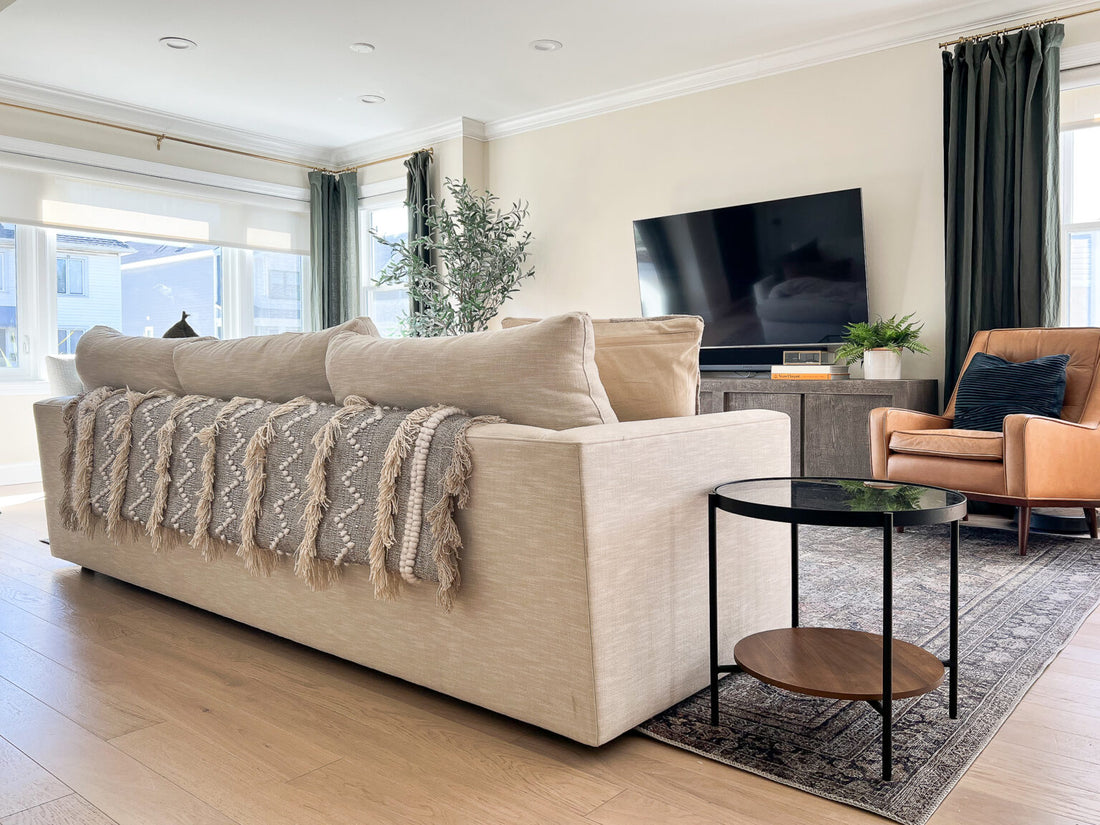
According to a recent Tiktok trend, if your couch touches the wall, you're "poor" and if it doesn't touch the wall you're "rich." Could that be true?
Your living room is the heart of your home, where comfort meets style. The way you arrange your furniture can make all the difference in how inviting and functional the space feels. But when it comes to your couch, should it touch the wall or float in the center of the room? Let's explore the ins and outs of couch placement to help you create the perfect living room layout.
Should Your Sofa Go Against the Wall? The verdict? Not necessarily. While it's a common practice, leaving a small gap between your sofa and the wall can make your space feel more open and airy. Whether you push it back or leave it floating, the choice is yours.
Consider the size of the room: In smaller rooms, pulling your couch away from the wall can create the illusion of more space. Conversely, in tiny rooms like offices or dens, placing your couch against the wall might be the most practical choice to free up floor space for other furniture pieces.
And also, the size of the sofa: Choose a sofa that fits comfortably in your room, both in terms of size and style. A large sectional might overwhelm a small room, while a smaller sofa could get lost in a spacious area.
Symmetry and Spacing Between Furniture: Creating symmetry in your living room layout can make the space feel more balanced and inviting. Aim for equal distances between furniture pieces, and consider the 10-foot rule to ensure optimal seating arrangements.
Think Centralized Space in the Middle: Rather than lining all your furniture against the walls, create a centralized space in the middle of the room. This focal point can be around a fireplace or TV, offering flexibility in seating arrangements for different occasions.

DON’T – Furniture against all of the walls

DO – A cozy space in the middle
Put Something Behind Your Couch: If floating your furniture isn't an option, add visual interest by placing items like plants, sofa tables, or shelving behind your couch. This creates depth and texture while preventing the couch from touching the wall directly.
Feng Shui and Flow: For those mindful of energy flow, consider Feng Shui principles when placing your couch. Position it near a wall for support, but leave space for air and energy to circulate freely. Avoid placing it directly in front of doorways or windows for optimal balance.
The Takeaway: Ultimately, there's no one-size-fits-all answer to couch placement. Experiment with different layouts until you find what feels right for you and your space. Whether you're a fan of floating furniture or prefer a more traditional setup, the key is to create a comfortable and functional living area that reflects your unique style and personality.

